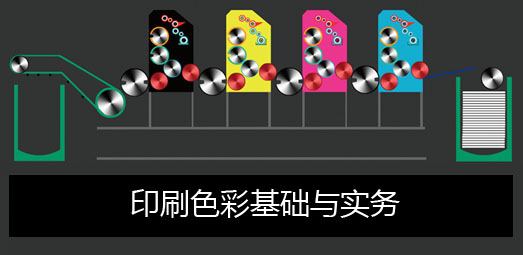
当前课程知识点:Science-based Food Safety Supervision > Chapter 16 New Challenges and Strategies > Discussion questions- new challenges for food safety supervision > Chapter 10 Oxidative Hazards- MDA by Dr. Tang
返回《Science-based Food Safety Supervision》慕课在线视频课程列表
Chapter 10 Oxidative hazards by Tang
Hello, Ladies and Gentleman, Welcome to our lecture again, Scientific Food Safety Supervision. In today’s lecture, I would like to talk about another hazard during process.
Last time, I talked about a hazard acrylamide during process that is frying process, Today, I will introduce a new one actually during storage which calls MDA, malondialdehyde, a hazard in the meat product. There is a method to determine the amount of MDA value. This method is called TBA (thiobarbiburic acid) method. You will see the TBA to react with MDA, and then form an adduct with a pink color. We use pink color to measure how much MDA inside the meat product. MDA is hazardous because it’s carcinogenic. So we can see if this product contain potential hazard or not.
This slide showed you the research work we have done. We purchased 19 meat product samples from the market. The first one was the sausage, the second one meat ball, the third one Chinese style cured sausage, and also the dry meat product called jerky, beef jerky, the last one was the meat floss. With these five types of meat products, we wanted to measure how much MDA value inside, and based on this, we will see the shelf life, if the shelf life is reasonable or not reasonable? And how potential hazard inside the meat. From the first type you see here, we have three columns here. The black one which was shelf life shown on the product, and then we had another one which called the safety 1 or safety 2. What does mean? We used the 0.5 mg/kg (MDA/meat) as the bench line. We used 1 mg/kg MDA as another bench line to see how many days would these products be stored in the stored conditions and at how many days would this value of MDA be reached. If it reached 1 mg/kg, that means this product would be dangerous, or potential hazardous because this value would cause carcinogenic, if it’s 0.5 mg/kg, this not so hazard, not caused carcinogenic, but causing quality problem, so we can use this one to compare the shelf life on the label to see if it is good or not good. So the first product you see here is OK, because very close to shelf life days, unfortunately for the meat ball based on the MDA value measured, the shelf life only can have around 20 days, but the shelf life on the label was about one month to 40 days, and for the Chinese cured sausage, the shelf life on the label was one year, but the MDA value reached to safety 1 and safety 2 was less than one month, so that means it was much shorter of the shelf life compared to the label one. It indicated that if we buy the food to consume at the end of this shelf life shown on the label that means much MDA in this product, which would be harmful. For the dry meat, and also the other one were very similar.
So what are these results indicated? The first indication is why this MDA come out during storage? because in the meat, in particular the lean meat, there is lipid inside, as you know, the lipid is easily to be oxidative, as the MDA is an oxidative product and this oxidative product would be hazard, so the first indication is oxidative hazard in the meat, but this hazard is normally ignored by our scientists, by also our consumers, by our government. The second indication is the shelf life on the label which is not so scientifically, why? Because this one only depended on the biological hazard, never consider chemical hazard, in particularly oxidative hazard. The third one is the safety standard. We use safety standard only biologically, so the safety standard should be improved based on our research results, and the final indication is that we have to consider strategies which should be emphasized for how to prevent this kind of issue. So in this example of the sausage at zero days, you see the color and everything is good,and you see, during the 13 days, the color is changed and that means MDA value would gradually be formed during storage, and you see this one 22 days, you see the very black color and if you measure MDA value, it would be very high. So this is the fact that the MDA can be formed during storage even in the refrigerator condition for meat product, but this is oxidative product, so how to inhibit and how to remove?
One of the methods is to use antioxidant. We have two types of antioxidant, one is synthetic antioxidant, and these are the example of the synthetic antioxidant we can use. But unfortunately, many of those synthetic antioxidants are not allowed to use, because some of them also are carcinogenic. So we would have to other methods. This slide shows the natural antioxidants. These are called tea catechins from green tea, so here we have the structure of that tea catechin. OK. This is one of the tea catechins. The structure is very similar to vitamin E. You see the vitamin E’s structure, very similar to tea catechins, so the tea catechins, where are they from? From green tea. The slide shows you here green tea contain tea catechins 27%, oolong tea 23%, black tea 4% only. So that’s why we used green tea to get the tea catechins to do experiment during my PhD study in Ireland. I did 4 years of this project for this. I used tea catechins to feed the chicken. I tried to use tea catechins to feed chicken, and then I used meat to store in the refrigerator and also in the frozen conditions, and then to see how much tea catechins could inhibit the MDA value increase, so and yes, the tea catechins of course has a lot of benefit already, but never done experiment on the meat area, So this is an experiment trial in vitro and also in vivo. This was the experiment I did in the National University of Ireland, Cork (UCC). This is UCC, this is laboratory I used to do the experiment to test the meat MDA value.
This slide showed the experiment results. You see we compared the vitamin E with tea catechins at 300 mg/kg, this means 300 ppm, and it’s very effective to prevent MDA value. You see much lower under the condition of refrigeration, and also relatively close to vitamin E. I used tea catechins as animal feed additives to feed chicken. That’s result. This is another one to show different part of meat from chicken. The result is similar. I also used this one as additive to the fresh meat. This is more effective, see, this one is very very effective during the refrigerator, you see the lowest one is tea catechins at 300 levels, and during the refrigerator, and you see the MDA nearly low change. But compared to the control, you see they increased dramatically, that means tea catechins used during fresh minced meat very effective to inhibit MDA value. So this is the example I show you use MDA to show you the hazard, not only be process, also can be from storage in particular the meat.
The question is what is the condition? And what this kinds of hazard? Why this kind of hazard ignored? How to prevent this kind of hazard? So what is the solution? I just asked you consider these questions to discuss? I just show you when I did this one I used antioxidant to do that for the industry, for the industry, we can encourage industry to see to this oxidization. So this is another example of hazard, we encourage industry to use natural antioxidant. For the consumer, we would suggest in future or in later, we should pay some attention to oxidative hazard, which we called invisible hazard or super invisible hazard, so this is another example I show you today to indicate we have the hazard from storage conditions. So much for today, and thank you for listening. See you next lecture.
返回《Science-based Food Safety Supervision》慕课在线视频列表
-Chapter 1 Course Introduction by Dr Tang
-Discussion questions-case study
-Chapter 2 Food and Food Requirements by Dr. Tang
-Multiple choice questions- choose one from four to five
-Chapter 3 Food Safety and Food Defense by Dr. Tang
-Multiple choice questions- choose one from four to five
-Chapter 4 Hazards from Emerging Pathogens By Dr. Nimal Pathiraja
-Multiple choice questions -choose one from four to six
-Chapter 5 Zoonoses By Dr. Nimal Pathiraja
-Topic discussion-zoonose and animal drug residues
-Chapter 6 Pesticides and Residues by Dr. William Riley
-True or false questions
-Chapter 7 Mycotoxins by Dr. William Riley
-True or false questions
-Chapter 8 Biofilm and Food Safety by Dr. Tang
-Multiple choice questions-choose one from four to six
-Chapter 9 Processing -Induced Hazard-Acrylmide by Dr. Tang
-True or false questions
-Chapter 10 Oxidative Hazards- MDA by Dr. Tang
-Topic discussion-oxidative hazards in meat products
-Chapter 11 Traditional Detection Methods for Food Safety by Dr. Jerry Teng
-Multiple choice questions -choose one from four
-Chapter 12 Contemporary Detection Method-Biosensor for Food Safety by Dr. Jerry Teng
-True or false questions
-Chapter 13 FATTOM and Hurdle Technology for Food Safety Control by Dr. Tang
-Multiple choice questions-choose one from four to five
-Chapter 14 Food Poisoning and Emergency Response by Dr. Nimal Pathiraja
-Multiple choice questions-choose one from four to six
-Chapter 15 Food Safety Traceability by Dr. Nimal Pathiraja
-Multiple choice questions-choose one from four to five.
-Chapter 16 New Challenges for Food Safety by Dr. Tang
-Discussion questions- new challenges for food safety supervision






